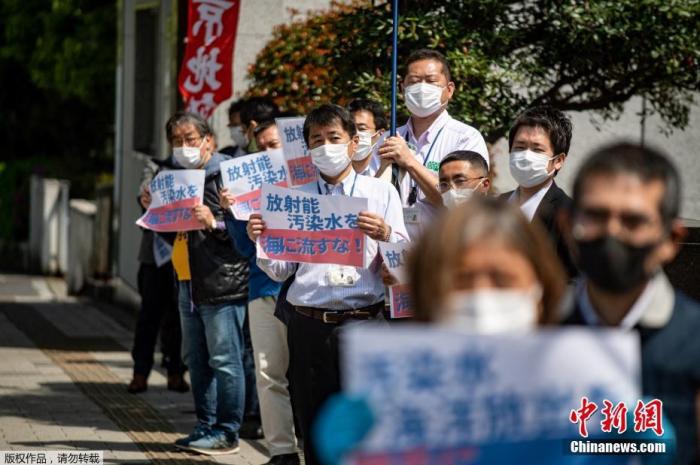China News Service, August 29. According to the Russian Satellite News Agency on the 28th, Japan’s "Fukushima One" nuclear power plant operator Tepco announced that it plans to build an underwater tunnel to initially treat the low-level radioactive water accumulated on the site of the damaged nuclear power plant. After being discharged into the sea.
Due to concerns about the diffusion of tritium isotopes in the water, the plan for direct drainage of the plant was modified to reduce the amount of preparation work.
The nuclear energy management department should approve the new plan.
Representatives of the International Atomic Energy Agency will visit Japan to discuss security surveillance issues.
Data map: Nuclear sewage storage tank of the Fukushima Daiichi Nuclear Power Plant in Japan.
According to the new plan, water will be released into the sea through an underwater tunnel, about 1 km away from the shore.
More than 1.25 million tons of nuclear treated water have been accumulated in the steel tanks of "Fukushima No. 1".
In order to cool the molten fuel in the destroyed reactor, rainwater and groundwater are mixed with contaminated radionuclides, and most radioactive materials are separated through processing, including strontium and cesium, but tritium is left behind.
The Japanese side plans to blend the treated water with a large amount of seawater to reduce the concentration of tritium to below 1500 becquer per liter.
TEPCO pointed out that when water is injected into the sea, the concentration of tritium will meet the WHO drinking water regulations.
For effective monitoring, the monitoring of radioactive materials in the bay waters of 2 kilometers around the power station and the adjacent 20 kilometers will be strengthened.
Currently, the new plan needs to be approved by Japan's nuclear energy regulatory authority.
In addition, drilling permits from the local government, the central government and the fisheries association are required.
In this regard, there are constant voices of opposition.
Thirty social organizations, the All Japan Fisheries Cooperation Federation, Fukushima, Miyagi, and Ibaraki Prefecture Fishermen’s Associations have opposed the release of water.
In Fukushima Prefecture, 41 districts expressed their opposition, accounting for about 70% of the total.
So, how novel and unique is the new design of the underwater tunnel? The Russian Satellite News Agency interviewed Alexander Uvarov, the editor-in-chief of the "Nuclear Energy Information" network.
He pointed out, “The tunnel itself is nothing peculiar. Nuclear power plants in many countries are close to the sea and also use this technology. One of the purposes is to extract water from the sea. The uniqueness of Fukushima itself is that there has never been such a solution to power plant accidents in history. Precedent."
Uvarov said: "In other words, there is no technological innovation. The main goal is to eliminate the loss of reputation of local seafood. This is unusual. In addition to tritium, the water purified from radioactive elements is straightforward. The platoon will not be too harmful. The decision was made in April this year. The laying of the tunnel requires extra time and a lot of money, but there is no shortage of money."
Data map: Outside the prime minister's office in Tokyo, Japan, local people held a rally to protest the Japanese government's plan to discharge purified water from the disaster-stricken Fukushima nuclear power plant into the sea.
As for why many people and organizations in Japan and abroad oppose the discharge of nuclear power plants into the ocean, Uvarov pointed out, “Of course it is disturbing for ordinary people to have such news. Everyone does not believe in official notifications. The reason for the dissatisfaction of neighboring countries is also It’s that the Japanese threw'garbage' into the ocean that they shared. In the 20th century, they didn’t pay attention to these things at all. The British discharged jet water from many of their own nuclear power plants, and did not even consider dilution. Now is another era, all People are concerned about ecological issues, even if they do not have specialized knowledge, people are particularly sensitive to all issues related to nuclear energy."
The Japanese government understands the concerns of local fishermen.
Recently, the government announced that it would purchase their products if the planned drainage of the nuclear power plant would cause inconvenience to sales.
On August 19, the International Atomic Energy Agency and Japan reached an agreement to start a sewage discharge monitoring project.
In April 2021, the Japanese government issued a sewage discharge permit.
It is estimated that the drainage preparation will take about two years.
However, the current underwater tunnel project may change the proposed deadline.

